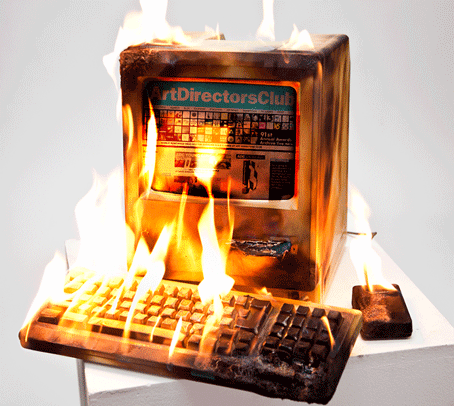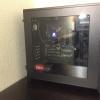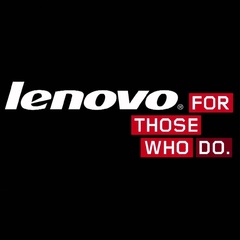-
Posts
5,587 -
Joined
Awards
This user doesn't have any awards
About Volbet
- Birthday January 3
Contact Methods
-
Steam
Volbet
-
Origin
Volbet
-
PlayStation Network
Volbet
-
Xbox Live
Volbet
Profile Information
-
Gender
Male
-
Location
At the Prince's Ball
-
Occupation
Lawyer
-
Member title
Your Average Pyromaniac
System
-
CPU
AMD 2920X @ 4.15GHz
-
Motherboard
MSi X399 SLI Plus
-
RAM
64GB of Corsair LP 3200Mhz
-
GPU
Asus TUF RTX 3080
-
Case
NZXT H710
-
Storage
1tb Samsung 970 EVO NVME SSD, 8tb Toshiba HDD and a 4tb Seagate Barracuda
-
PSU
Seasonic Focus PX-750
-
Display(s)
AOC U3477PQU & Dell 2720d
-
Cooling
NexXxos Monsta 360 rad & Black Ice GT 360 rad
-
Keyboard
Kindle Star Orion 87 with Gateron CJ switches
-
Mouse
Razer Viper V2 Pro
-
Sound
Asus Xonar D2X, NAD M51 DAC, Topping A90, Audeze LCD-2 headphones & Blue Snowball mic
-
Operating System
Windows 11
-
Phone
Sony Pro-I
Recent Profile Visitors
The recent visitors block is disabled and is not being shown to other users.
Volbet's Achievements
-
The clicky option from Matias are fine. They won't be as good as real Alps NOS White, Blue or Orange, but they'll do in a pinch. I use them in a Bardorf keyboard and have been perfectly happy with them. They reason they aren't as good as real Alps, is because the Matias design is based on the later, cheaper simplified Alps switches. While they're generally more reliable than older Alps designs, they aren't as satisfying to type on.
- 1 reply
-
- alps switches
- keyboard
-
(and 2 more)
Tagged with:
-
The match between the keycaps and the keyboard was actually a happy coincidence. I bought the keycaps a long time ago on sale, as I thought the KAM profile looked interesting to try. But as is often the case, I ended up never really doing anything with the keycaps after I got them. But once the Machina Orbit arrived, I thought the color was a near perfect match. Too good a match to not use them, anyway. I think the Gateron Melodics, like any clicky switch, is a compromise in terms of their sound. With any clicky switch it seems you have to give up certain qualities in order to gain others. The Alps-like click-leaf design of the Melodics is really nice compared to the Cherry click-jacket or the Kailh click-bar, as it as a more substantial click than the former and doesn't have the double click of the former. Further more, the Melodics also doesn't have the hollowness of the ZealPC Clickiez. However, the trade-off with the melodics is that the sound is much more high pitched than the aforementioned ZealPC Clickiez or something like the Kailh Box Jade/Navy/White Owl. Although, the Melodics do also have a much quieter click than either the ZealPC Clickiez or the any of the Kailh click-bar switches I've tried. But even with all that, I do think the Melodics sound just fine with the SP-111 R2. I think it might be down to both the semi-open design of the case and the SA keycaps I chose to use. It seems to create the right balance of openness and resonance to compliment the sound. But for the switches to truly shine, you probably need a true plastic case, made of either polycarbonate or ABS, with a lot of empty space inside. Basically make the keyboard into an acoustic guitar. I could imagine that the bottom-mounted aluminium plate you describe would give some strong metallic resonance when paired with a clicky switch. I always strongly preferred either carbon fiber, FR4 or PC plated for clicky switches. Or even better is a plate-less build. And some sort of isolating mount is a must, if the case isn't plastic. And as you mentioned, the tactility of the Melodics is really something else. It's basically a lighter version of Blue Alps, which is something I'm always glad to use. The tactility that a click-leaf offers is something that really can't be replicated by any other means. It's a snappy tactility that not even the heaviest of tactile switches can come close to. The closest I think I've found are the Wuque Studie Heavy Tactiles, but even those aren't a perfect match. My main criticism of the Melodics is that the actuation and the click don't match perfectly, as the actuation happens slightly after the click is activated. It's not really an issue that you experience with normal typing, but if you're one of those people that always keep your keys slightly pressed, that might be an issue. Yeah, I always found flex-cuts to be gimmick, which mainly serve to make your mechanical keyboard feel like a membrane keyboard. Flex-cuts also negatively affect the sound in my experience. One thing that could be interesting to try, would be to have some spacers 3D printed, so as to fit bigger gaskets on the plate. Akin to what Glorious did with the GMMK Pro, but without the need for a new bottom case. Experimenting with replacing the silicone socks with foam sounds really interesting. Poron foam should definitely create more flex, but you also need space for that flex to shine.
-
I guess I've been slacking in posting some of the group buys that finally have arrived: First up is the SP-111 R2 in lavender: I decided to build this out with Gateron Melodic switches, Durock V2 stabilizers (mainly because they came with 3U wires) and the keycaps are some Domikey SA Cyberpunk ABS caps. The switches are mounted to a (badly) modded carbon fiber plate. Modded in order for it to fit the ISO enter and the split left shift. As a solder PCB was the only choice, obviously the switches are all soldered in. And yes, it's a pain the ass to solder 111 switches, but I fear the day i might wanna try some different switches. This board is actually really fucking nice, and I know this is weird, but for me the best part is the dedicated caps-, scroll- and numlock indicator lights. it's something you see way too little on custom keyboards. It's also nice to have a custom keyboard with a numpad. And while not a roomy keyboard, it doesn't sound like it. I would honestly liken the sound of the keyboard more to old plastic keyboard than the modern customs made of metal. It sounds really good with the clicky switches. I do think a lot of the sound is down to the very isolating sandwich mount, where the plate goes all the way to edge of the case, creating a band around the entire keyboard. The only two bad thing I have to say so far is that: You have to reflash the firmware yourself in order for the keyboard to work properly. Else the keymapping is all over the place and VIA/QMK/VIAL won't recognize the keyboard correctly. Took the better part of two day to figure out what was wrong, but now it works perfectly and the keymapping is just like it should be. The recess for the USB cable (both for the computer connection and the connection between the two halves) is extremely shallow. So while I do wanna use a longer cable between halves, I can't fit any of the cables I currently have in my possession. Next up is the Machina Orbit in red with a copper bottom: This is a hefty 65% keyboard, weighing in at 2,55kg fully build with a POM plate. The switches used are Gazzew Boba U4Ts, which have had their springs swapped for a long 100g double springs. So it's an extremely heavy and very tactile typing experience, which you won't really find with any other switch. The switches have also been lubed with Tribosys 3204 and filmed with Deskey poron films. The plate is POM and the keycaps are KAM Command PBT caps, which are are sculpted, flat keycap profile. It uses TX AP stabilizers, which are my current favorite stabilizers to use, as snap-ins are so easy to install. The plate and PCB are mounted using rubber gasket in the tadpole-style. The only mod I've done to the board is the forcebreak mod. I don't really know if it was necessary, but I did it just to be safe. It's not like it's going to hurt. This is also a really nice board that doesn't really need any foam. it did come with both plate and case foam, but I opted to not use any of it. And the sound is really nice and full. Man, I'm jealous of that Zoom 98. It's one of those boards that I really wanted to try, but I just couldn't justify the price to myself. I've pretty much loved all the Wuque/Meletrix keyboards I've tried, but I have yet to actually own one. One day maybe... Also, the WS Morandi switches are some of my favorite linear switches. Considering their price, they're a bargin.
-
I also saw an issue in the smoothness rating, which I'm glad RTings did, as well. I think they're on to something with analyzing noise in a force curve, but my issue with that is, that they're essentially wanting to translate a subjective experience into an electrical signal. Noise in what should be a smooth signal will obviously tell you something about the development in the signal, but it will tell you nothing about how that noise feels to a person. As you said, different types of noise might feel different, even with slight differences in the noise. And that will probably be infinitely difficult to quantify.
-
It's no secret that I liked the previous MMStudio keyboard, the Class80, so they didn't have to ask twice when they put up the group buy for the Class60 with electrocapacitive Topre-like switches. And only seven months later the group buy finally arrived: The switches are fairly light, which I do have to get used to, but the build quality of this keyboard is extremely good. It's the first keyboard that I haven't had to do the forcebreak mod to, which speaks to the quality of the aluminum used. It's also really nice sounding without any foam, which again speaks to the quality. The leaf spring mounting is also really nice, as it offers a pretty good middle point in stiffness between gasket mounting and top mounting. The keycaps are the beige version of the "new" GMK MTNU keycaps, which are basically Cherry profile keycaps sculpted like Drop's MT3 keycaps. They're also PBT, which makes them really nice for everyday use. As for typing, I think it's a bit too early to say. I do find them really nice to type on, but that might also be down to the electrocapacitive switches. My main criticism is that you can only use plate-mounted stabilizers if you use the electrocapacitive switches. It's not a deal breaker, but it's worth taking into account, if you're in the market for the extras that are now available. But if you throw in some Durock or Owlabs plate-mount stabilizers, you're going to have an experience very similar to PCB-mounted stabilizers- Especially if you Band-Aid mod the plate before installing the stabilizers. If you're in any way familiar with MMStudio's keyboards, you also know that they add a buzzer and a solenoid to them. Both are very much gimmicks, as you'll probably only turn them on to hear what they sound like and then promptly turn them off. I will say the solenoid does offer some pretty good haptic feedback to your typing, but it's probably not going to be enjoyable for long typing sessions. EDIT: Another really nice thing is that the keyboard supports VIAL, which is second only to VIA in regards to customizing your keyboard. Especially in a small keyboard like this, it's a must to have the ability to set up layers and macros, as you do lack a bunch of keys. I generally really like RTings' approach too reviews, so this is welcomed news. I do fear that keyboard enthusiasts, just like audiophiles, aren't going to be very persuaded by pure data, as a lot of the market seem to more concerned with the subjective side of the experience.
-
Yeah, six months is long wait, but I really wanted a Machina Orbit, so it was either missing out or waiting until the end of the fourth quarter of 2023. So waiting it was. But manufactures like Qwertykeys and Meletrix usually deliver their group buys within a couple of moths, so I agree that those are usually a really good value. Finding switches in the EU can be a bit of a challenge. Usually you'll have to shop around. Different stores will price different switches cheaper than other. Usually, I tend to go with either KeyGem, Candykeys, Maxgaming, Coffeekeys and Keebcats. Although, I have shopped at other vendors when needed. For a linear switch, I've recently been enjoying the Wuque Studio Morandi switch. A longpole linear switch that sell for around 35-45 Eurocent a switch. The cheapest I've found them currently was on Coffeekeys for 39 Eurocent a switch excluding shipping.
-
Yeah, the name of the QK100 is kinda misleading. The "100" is more so referring to it having 100 keys rather than it being a 100% layout. I don't remember where i read it, but producing a full-sized keyboard can apparently be exponentially more expensive than something like a TKL or 65%, as the CNC required isn't available everywhere, and the PCB takes quite a bit more to design and manufacture. There's also the price of entry for the consumer, as the price to populate a full sized keyboard is quite a bit more than a smaller keyboard. You not only have to buy more switches, you also have to buy more keycaps. Although, the recent influx of larger 96% and 98% custom keyboards makes me hopeful that we'll see full sized offerings sooner rather then later. Personally, I have realized that I'm more than happy with a 96% keyboard for work. I don't use the majority of the navigation keys, so loosing some of those aren't a big deal to me. The only learning curve is due to the keys I do use being moved around a bit.
-
I would agree on principle with buying a group buy rather than a Keychron. Even some of the cheaper boutique, in-stock option can offer more value. Something like the QK100 is a really likely a better value than something like the Keychron Q6. However, Keychron has the massive advantage of having little to no fulfilment time. I currently have group buys that are 6 months deep and having no date of final fulfilment yet. Only a vague quarter statement. I would also agree with @GarlicDeliverySystem that Keychron offering hotswap ISO support is a massive reason to get a Keychron. A lot of group buys only offer ISO on their solderable PCB options. For a beginner, or someone that likes experimenting with switches, that is a massive advantage. Believe me, desoldering a full-sized is a royal pain in the ass. The Gazzew (Boba) U4T switches are a personal favorite of mine. Although, I need to get some more at some point. The Boba switches I have is pretty much a Ship of Theseus situation, as only the stem and bottom housing remain of the original switch. Everything else has been replaced.
-
Unfortunately, all the Q- and Q-Pro series comes with is a thin sheet of film and a think layer of sparse foam. You can buy acoustic upgrade kits on Keychron's website, but I haven't had the opportunity to test those out yet. Going for the sound of metal case certainly could be case, but the quality of the machining doesn't really lend to a good sound, as my experience with both the Q6, the Q4, and the Q14 Pro has been that they ring like crazy. I guess it's a sound that someone will like, but it isn't for me. The ping that's prevalent on Keychron's metal cases can be remedied quite easily by the forcebreak mod, so they are workable, but it's still annoying that you need to mod a keyboard you just bought.
-
I decided to try another Alice layout keyboard, this time a Keychron Q14 Pro: The board has been build out with lubed and filmed KNCKeys Clackbits linear switches and PBTFans BoW keycaps. The extra keys over the numpad are just metal keycaps bought from Keychron. As is the case with a lot of entry-level keyboards, the white that Keychron has gone with for the case isn't really white. In person it has a pretty obvious pink/purple tint. It's not something you notice in daily use, but it's definitely noticeable. I also decided to do as I say and actually use the included stabilizers. Lubed up, they're actually really good. I put a bit of Krytox 205g0 in the housing, some XHT-BDZ on the wires, and a bit of insulation foam under the wire and all is good. No rattle or sticking in sight. It seems that the "issues" that I've experienced with other of Keychron's aluminum keyboards is still present on the new Pro-line. So I still highly recommend to do a the forcebreak mod, a tape mod and find something to stuff the case with. For me the filling seem to default to pouring silicone into it: After I bought the keyboard, Keychron put an acoustic upgrade kit up for sake on their website. As I decided to go all in, I can't really comment on how well that works, but it might be worth it, if you're interested in a Q-series Keychron. But without any kind of filling, the keyboard has a rather loud metallic ring. Every time you hit a key it's like hitting a bell.
-
You make me jealous of how little you can get quality keycaps for, when you shop for ANSI layout keycaps. When you need Nordic ISO keycaps, you're picking up the scrap for a premium. For example, find a good SA keycap set has basically left me with two options that are both around $200. Although, one of them is an almost perfectly replica of the Space Cadet's keycaps, so I might have bought them anyway:
-
Adding bits of plate foam is actually not a bad idea. It's not something I'd thought of myself, but it makes sense to add or subtract a bit of foam to achieve the desired balance between muting the sound and retaining the resonance of the case. It's especially interesting in a roomy plastic case. Thanks a lot for the idea. Using foam to soften a bottom mount is also a really neat idea. I've done that with rubber O-rings before, and I've done something similar with foam to a top mounted PCB on my keyboard at home. Also, this is my Q6 as it is currently: While GPBT do look good on it, I can't say the quality is all that good. They're rather thin, so the sound isn't all there. I also loath that the Nordic ISO version of All GPBT set use all lowercase letters for the modifier keys.
-
The U4T's are generally really loud. The combination of the long pole, the plastic composite and the tactile bump really makes them present sound-wise. My U4T's are currently spring-swapped to some 100g dual-stage springs, and while that did help with the bottom-out sound, the return became exponentially louder. it's a switch that just wants to be loud, it seems. Well, with "full" force break mod I just mean that I've placed electrical tape at all the points where the bottom case screw unto the top case. I've seen people only to the center or corner point, so I just wanted to specify that I coveres all the points. The silicone pads on the Q-series isn't really enough to dampen the chatter between the top and bottom case, in my experience. Nothing really beats the tried and tested forcebreak mod. I partially did the whole silicone pour in the Q6 to dampen the flex from the gasket mount. I know it might be considered sacrilege, but I don't really like my typing surface to give under my fingers. So yes, the silicone pour will, depending on how much you pour, interfere with the gasket mount. But it definitely is possible to pour little enough to not interfere with anything. It's just important to cover the two indents for the daughter-board cable and the potentiometer. But the main reason for the silicone pour was to make the keyboard sound denser. For all its heft, the Q6 sounds rather hollow and brittle. I did try both poly-fill and car dampener in the past, but it didn't really help. The silicone I used is rather high in density, so it does make it sound substantial.
-
I second that. The closest I've found is the Drop + Biip MT3 extended 2048, but the font is quite different and the colored accents are quite a bit more saturated. I use a Keychron Q6 at work, and I'll agree that it's quite loud (and not in a good way) out of the box. It's basically a platform that requires you to mod it. And depending on who you are, that might be a good thing. Ended up kitting my Q6 out with Gateron Blizzard switches, a PC place, full forcebreak mod and filling the bottom up with poured silicone.
-
I decided to give an Alice layout a try, so I picked up a Feker Alice 98. I build it out with some Cherry MX Black Hyperglide switches, which have been lubed with Krytox 206g0, filmed and spring-swapped to short 75g TX springs. The keycaps are Drop+MiTo Canvas XDA profile keycaps. I guess the font is love it or hate it situation, but the quality of the keycaps is really nice. As for the keyboard kit itself, it's decently nice. Which honestly isn't too much to ask for a plastic keyboard that costs $200. I does come with some really nice switches and keycaps that I didn't end up using, so that's on me. My only really issue with the kit is the stabilizers. There's not really any good reason why such an expensive kit should use plate-mounted stabilizers. The stabilizers are really good for plate-mount stabilizers, though. No real need for band-aid modding them, but lubing them up is still recommended. Although, the choice of stabilizer might be for the better, as the keyboard is incredibly difficult to take apart, especially without tearing the ribbon cables keeping everything together. The software that you use to remap the keys and add graphics to the screen is also uniquely terrible. It's one of the best arguments for why all keyboards should have support for QMK and/or VIA.



















